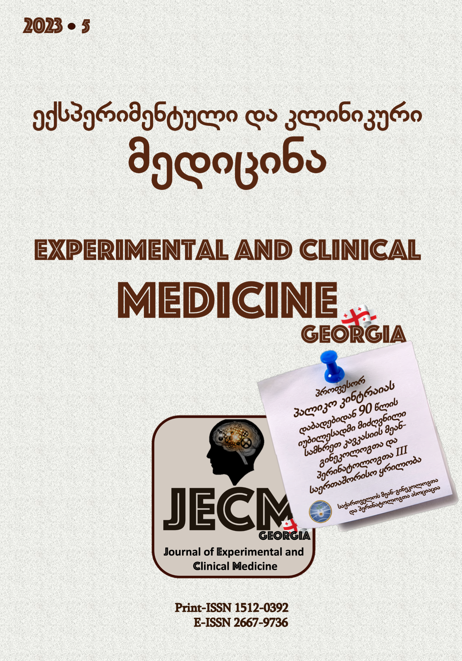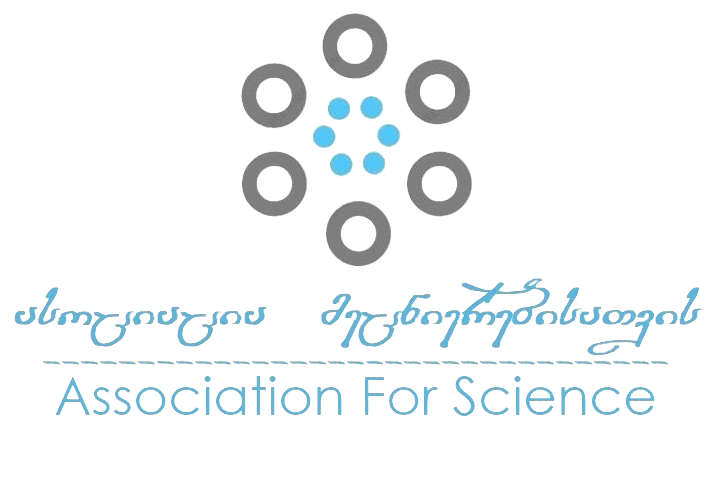RESULTS OF ANOVULATION THERAPY IN WOMEN WITH POLYCYSTIC OVARY SYNDROME WITH NORMAL WEIGHT AND WITHOUT INSULIN RESISTANCE
DOI:
https://doi.org/10.52340/jecm.2023.05.18Keywords:
infertility, anovulation, polycystic ovary syndrome, inositolAbstract
In order to study the effectiveness of the treatment of anovulation with myo-inositol and d-chiro-inositol (MI:DCI) (40:1) in patients with polycystic ovary syndrome with normal body weight without insulin resistance, 88 patients with infertility were examined. Anthropometric indicators, hirsutism were measured, body mass index (BMI) was calculated, luteinizing hormone (LH), follicle-stimulating hormone (FSH), total testosterone in blood serum, glucose and insulin levels were determined, the HOMA-IR index was calculated. The therapy was carried out with myo-inositol (MI) + D-chiro-inositol (DCI). Statistical analysis was performed using software (SPSS) version 23.0. Patients were divided into 2 groups: group I - 40 women with normal BMI and HOMA-IR not exceeding 2.7, group II - 48 women with elevated and high BMI and HOMA-IR ≥2.7. The average age of patients in group I was 26.8±1.92 years, in group II - 27.0±1.56 years. Before treatment, a significant difference between the groups was observed in the BMI value (p=0.006), in the content of total testosterone, which was significantly higher in group II (p=0.053), as well as in the glucose content (p=0.024) and the HOMA-IR index (p =0.048). After 6-7 months after a 12-week course of treatment, both groups I and II showed a slight decrease in BMI. In patients of group I, the amount of LH in the blood decreased on average by 29.9% (p=0.232), in group II - by 27.0% (p=0.361). The level of FSH increased by 38.1% (p=0.052) and by 40.0% (p=0.053) in comparison with the initial level in groups I and II, respectively. The ratio of LH/FSH compared with the initial level decreased in group I by 32.3% (p=0.024), in group II by 36.6% (p=0.052). The level of total testosterone decreased in group I - by 41.8% (p=0.05), in group II - by 51.3% (p=0.011). In group I, the glucose level decreased by 10.5% (p=0.663), insulin - by 7.6% (p=0.480); in group II - by 25.8% (p=0.115) and 20.1% (p=0.042), respectively; index HOMA-IR in group I decreased by 10.0% (p=0.006), in group II - by 21.0% (p=0.394). After therapy, in the total sample, the proportion of patients with grade I hirsutism decreased from 48.9% to 9.1%; none of the women had grade II hirsutism. In women with PCOS with normal body mass index and insulin resistance, MI:DCI therapy has a positive effect on LH, FSH, LH/FSH and total testosterone ratios, and hirsutism.
Downloads
References
Akhundova NN. Polycystic ovary syndrome: Modern possibilities of treatment using minimally invasive technologies. Central Asian Medical Journal named after M.Mirrakhimov. 2018; XXIV (1-2): 73-76.
Colak E, Ozcimen EE, Tohma YA, Ceran MU. May myo-inositol and d-chiro-inositol (40:1) treatment be a good option on normal-weighted polycystic ovary syndrome patients without insulin resistance? J Obstet Gynaecol Res. 2020;46(12): 2605-2611. doi: 10.1111/jog.14505.
Dinicola S, Unfer V, Facchinetti F, Soulage C, Greene N, Bizzarri M, et al. Inositols: from established knowledge to novel approaches. Int J Mol Sci. 2021;22(19):10575. doi: 10.3390/ijms221910575.
Facchinetti F, Unfer V, Dewailly D, et al; Group of 'Inositol in PCOS and Reproduction'. Inositols in Polycystic Ovary Syndrome: An Overview on the Advances. Trends Endocrinol Metab. 2020;31(6):435-447. doi: 10.1016/j.tem.2020.02.002.
Greff D, Juhász AE, Váncsa S, Váradi A, Sipos Z, Szinte J, et al. Inositol is an effective and safe treatment in polycystic ovary syndrome: a systematic review and meta-analysis of randomized controlled trials. Reprod Biol Endocrinol. 2023;21(1):10. doi: 10.1186/s12958-023-01055-z.
Laganà A, Forte G, Bizzarri M, Kamenov Z, Bianco B, Kaya C, et al. Inositols in the ovaries: activities and potential therapeutic applications. Expert Opin Drug Metab Toxicol. 2022;18(2):123–33. Doi: 10.1080/17425255.2022.2071259.
Lal L, Bharti A, Perween A. To Study The Status of LH: FSH Ratio in Obese And Non-Obese Patients of Polycystic Ovarian Syndrome. IOSR J Dent Med Sci. 2017;16(01):20–23. doi: 10.9790/0853-1601012023.
Monastra G, Unfer V, Harrath AH, Bizzarri M. Combining treatment with myo-inositol and D-chiro-inositol (40:1) is effective in restoring ovary function and metabolic balance in PCOS patients. Gynecol Endocrinol. 2017;33(1):1-9. doi: 10.1080/09513590.2016.1247797.
Nordio M, Espinola MSB, Bilotta G, Capoccia E, Oliva MM. Long-Lasting Therapies with High Doses of D-chiro-inositol: The Downside. J. Clin. Med. 2023;12(1):390. doi: 10.3390/jcm12010390.
Roseff S, Montenegro M. Inositol Treatment for PCOS Should Be Science-Based and Not Arbitrary. Int J Endocrinol. 2020;2020:6461254. doi: 10.1155/2020/6461254.
Saadia Z. Follicle Stimulating Hormone (LH: FSH) Ratio in Polycystic Ovary Syndrome (PCOS) - Obese vs. Non- Obese Women. Med Arch. 2020;74(4):289-293. doi: 10.5455/medarh.2020.74.289-293.
Satyaraddi A, Cherian KE, Kapoor N, Kunjummen AT, Kamath MS, Thomas N, et al. Body Composition, Metabolic Characteristics, and Insulin Resistance in Obese and Nonobese Women with Polycystic Ovary Syndrome. J Hum Reprod Sci. 2019;12(2):78-84. doi: 10.4103/jhrs.JHRS_2_19.
Simi G, Genazzani A, Obino M, Papini F, Pinelli S, Cela V, et al. Inositol and in vitro fertilization with embryo transfer. Int J Endocrinol. 2017;2017:5469409.
Singh S, Pal N, Shubham S, et al. Polycystic Ovary Syndrome: Etiology, Current Management, and Future Therapeutics. J. Clin. Med. 2023;12(4):1454. doi: 10.3390/jcm12041454.
Toosy S, Sodi R, Pappachan JM. Lean polycystic ovary syndrome (PCOS): an evidence-based practical approach. J Diabetes Metab Disord. 2018;17(2):277-285. doi: 10.1007/s40200-018-0371-5.
Unfer V, Dinicola S, Russo M. A PCOS Paradox: Does Inositol Therapy Find a Rationale in All the Different Phenotypes? Int. J. Mol. Sci. 2023;24(7):6213. doi: 10.3390/ijms24076213.
Vyas L, Raiturker AP, Sud S, Goyyal P, Abhyankar M, Revankar S, et al. Management of polycystic ovary syndrome among Indian women using myo‐inositol and D-chiro-inositol. Bioinformation. 2022;18(2): 103-110. doi: 10.6026/97320630018103.
WHO Global Database for Body Mass Index. http://apps.who.int/bmi/index.jsp?introPage=intro_3.html.
World Health Organization. Polycystic ovary syndrome. 2023 28 June
Zhao H, Zhang J, Cheng X, Nie X, He B. Insulin resistance in polycystic ovary syndrome across various tissues: an updated review of pathogenesis, evaluation, and treatment. J Ovarian Res. 2023;16:9. doi: 10.1186/s13048-022-01091-0.






